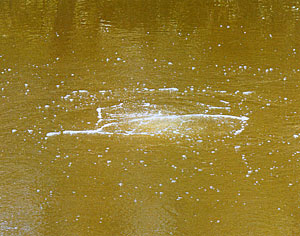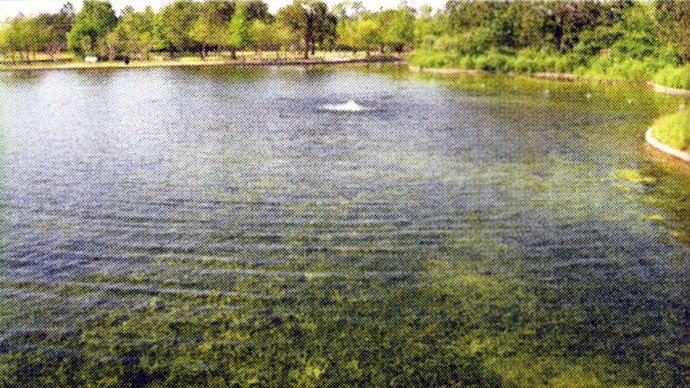
Here we are...those proverbial "dog days" of summer. In the south, we're looking for shade and panting just a few minutes after sunrise. We always wear shoes to avoid second degree burns on the bottoms of our feet. Folks in the north smolder when the temperatures rise into the 80's.
What happens to your pond life when the water gets hot?
Lots.
Some plants grow obnoxiously fast. Some water chemistry changes quickly. Some fish growth rates shift. Some insects develop and hatch in record time.
There are quite a few Laws of Nature in play. Different life forms have different requirements. Several species of filamentous algae, for example, prefer cool water. When it gets hot, they go away. Others thrive in the heat. Warmwater fish like warm water, but some warmwater fish don't like it hot. Largemouth bass, for example, slow way down when the water temperatures rise above the mid-80's. Bluegills feed and grow like crazy in hot water.
You'll notice bigger hatches of some insects, too. Mosquitoes show up from the shallow, stagnant areas so fast that you'll want to be inside at dusk in some areas of the country. But, dragonflies and damselfiies will hatch and flit about, eating those mosquitoes.
As the water temperature rises in a pond without aeration, the thermocline tends to rise as well. The temperature difference between top water and deep water widens. Biological activity in the upper reaches of the water column increases, almost to a fever pitch. Decomposition of organic matter is happening as fast as it can, young fish are growing, and the plants that prefer the heat are thriving.
Below the thermocline, almost all biological activity comes to a screeching halt. By July, deeper water has completely run out of oxygen and all biological functions except anaerobic activity stops. That means organic matter lies there, awaiting its turn to break down. When will its chance appear? When the pond turns over or aeration begins.
What about your fish? Cool water fish, in hot water, struggle to survive, much less thrive. Warmwater fish aren't nearly as active as they were last spring...or nearly as feisty as they'll be next fall. Bass tend to move from shore and suspend, feeding when hungry.
Aerate your pond. Nature aerates horizontally by breezes which cause waves. Waves move laterally, smacking the shore and then turning under, causing a circular current a few feet beneath the surface. Aeration creates vertical movement, taking that bottom water and moving it upward, typically with columns of bubbles cascading to the surface.
As those bubbles make a path to the surface, they bring stagnant lower water topside, too. As it gasps for breath, gasses are released; the newest water is forced outward as more water comes up. Before long, your precious pond is being circulated.
Careful, though.
Don't overdo it. Here it is, mid-summer and your pond's water is about as stratified as it can get. If you push too much of that cold, dirty water to the top too quickly, you'll gas your fish. Our finned friends will lose that argument.
Look through the pages of the Pond Boss magazine. We've carefully selected these advertisers, gotten to know them...heck we even know most of their families. You'll see a number of advertisers who sell aeration products. Trust them. They are experts whose mission is to help you be better stewards of your water. They fit the Pond Boss credo. Look at the different products and systems and choose what suits your situation, your budget, and your pond.
Part of our charge as landowners is to be better stewards of what we have. Aeration is one of those tools to boost Mother Nature's water cycle. Move the water and you'll see an amazing difference in its ability to be cleansed.
Reprinted with permission from Pond Boss Magazine



